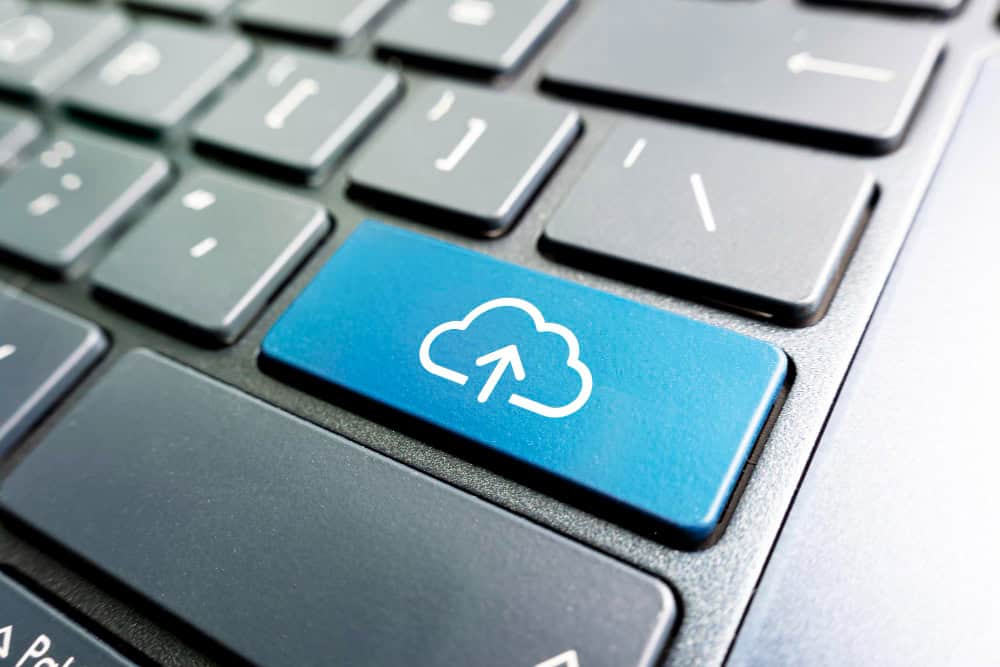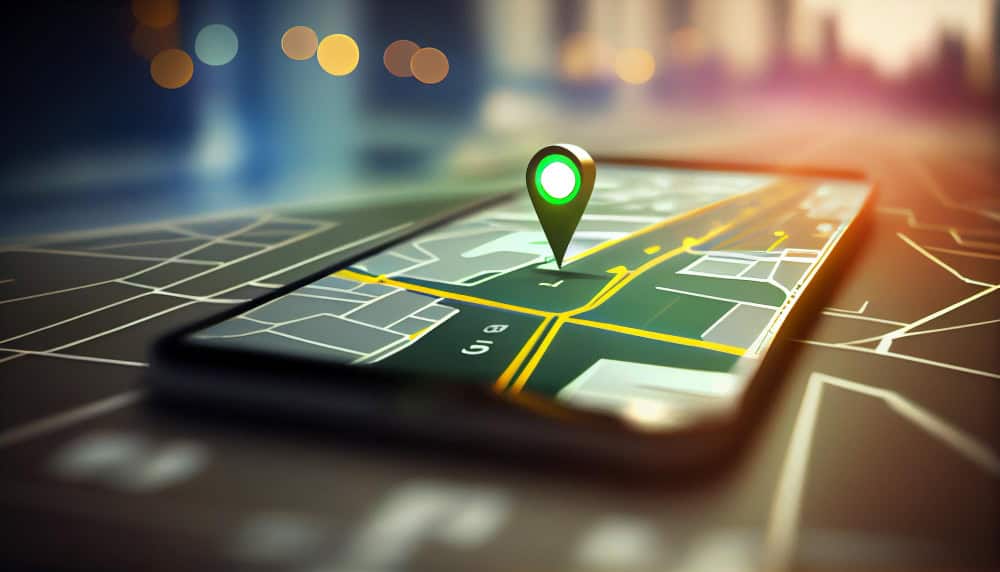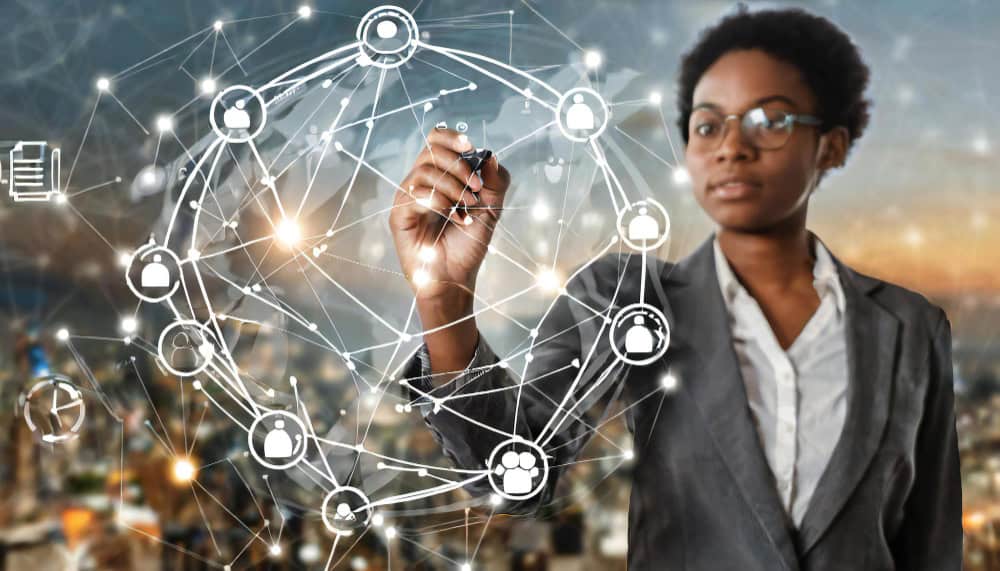Depuis quelques années, l'Internet des Objets (IoT) a connu une croissance mondiale dans de nombreux secteurs et a été adopté par les consommateurs, grâce à la Transformation Numérique. En Afrique, nous constatons une adoption accrue de la technologie IoT, sur le continent. Cette croissance devrait atteindre 114,20 milliards de dollars en 2023. Le chiffre d’affaires généré par l’IoT en Afrique devrait afficher un taux de croissance annuel (CAGR 2023-2028) de 15,94 %, ce qui se traduira par un volume de marché de 239,20 milliards de dollars US d’ici 2028. Avec une croissance aussi importante prévue sur le marché de l'IoT, quels sont les cinq principales innovations de type IoTqui ont ou aurnt un impact conséquent sur le continent Africain. »
Table des matières
ToggleLe rôle de IoT dans la vie quotidienne en Afrique
Afin de mieux comprendre le rôle que joue l'IoT dans la vie des africains, il est essentiel de noter que, selon Statista, le marché de l'Internet des Objects se compose de sept segments différents. Il s'agit notamment :
- Des appareils connectés utilisés par les particuliers, tels que les appareils domestiques intelligents, font partie de IoT grand public aussi appelée Consumer IoT.
- Smart Finance (Financement intelligent) couvre les applications IoT utilisées dans les secteurs financiers tels que l'assurance télématique, l'immobilier et les distributeurs automatiques de billets.
- Dans le secteur de la santé, l'IoT couvre toutes les applications du domaine médical, telles que celles utilisées pour les soins, la surveillance à distance des patients et les opérations chirurgicales.
- L'IoT industriel englobe différentes applications dans des domaines tels que l'automatisation industrielle et agricole, l'optimisation de la chaîne d'approvisionnement et la maintenance prédictive.
- IoT automobile englobe toutes les applications IoT dans les domaines de la mobilité et du transport.
- L'IoT couvre d'autres cas d'utilisation qui ne sont pas inclus dans les marchés mentionnés précédemment.
Les marchés ci-dessus mettent en valeur la diversité dans l'utilisation de l’IoT. Dans un contexte africain, les applications IoT en cours d’adoption visent à améliorer le quotidien des personnes vivant sur le continent et celles destinées aux économies en développement. Nous mettons en évidence ci-dessous 5 principales innovations IoT qui occupent une place centrale sur le continent.

1. Applications mobiles IoT : Connecte les Personnes et les Données
Les applications mobiles IoT jouent un rôle important dans la connexion des personnes et des données. Cela est rendu possible grâce à des appareils qui peuvent communiquer avec d'autres, en particulier les smartphones et les tablettes.
Les applications mobiles IoT (Internet des Objets) jouent un rôle crucial dans la connexion des personnes et des données en permettant aux appareils de communiquer entre eux et avec les utilisateurs par l'intermédiaire de smartphones ou de tablettes. Ces applications mobiles IoT servent de pont entre les personnes et leurs appareils IoT, facilitant l'échange de données, le contrôle et l'interaction. Elles permettent aux individus d'exploiter le potentiel de la technologie IoT pour améliorer l'efficacité, la commodité et la sécurité dans divers aspects de leur vie, qu'il s'agisse de maisons intelligentes, d'applications industrielles ou autres.
Voici comment les applications mobiles IoT facilitent cette connexion :
- Connectivité Des Appareils :
- Les applications mobiles IoT servent d'intermédiaires entre les appareils IoT et les utilisateurs. Elles se connectent aux appareils IoT à l'aide de divers protocoles de communication tels que le Wi-Fi, Bluetooth, Zigbee et les réseaux cellulaires.
- En fonction de leur structure, ces applications peuvent établir des connexions directes avec les appareils ou communiquer par l'intermédiaire d'une passerelle IoT centrale ou des plateformes en cloud.
- Collecte des données :
- Les applications mobiles IoT collectent des données à partir d'appareils connectés. Ces données peuvent inclure des relevés de capteurs, l'état de l'appareil, des informations de localisation, etc.
- Les applications utilisent les API (interfaces de programmation d'applications) fournies par les plateformes IoT ou les fabricants d’appareils pour accéder et récupérer des données.
- Visualisation des données :
- Les applications mobiles IoT permettent souvent de visualiser des données en temps réel ou historiques au moyen de diagrammes, de graphiques, de cartes ou d'autres interfaces conviviales.
- Les utilisateurs peuvent surveiller l'état et les performances de leurs appareils et systèmes IoT à l'aide de ces visualisations.
- Contrôle et Interaction :
- Les utilisateurs peuvent contrôler les appareils IoT à distance grâce à l'application mobile. Par exemple, vous pouvez allumer des lumières, régler des thermostats ou verrouiller des portes depuis votre smartphone.
- La communication bidirectionnelle permet aux utilisateurs d'envoyer des commandes aux appareils et de recevoir des informations en retour ou des mises à jour de leur part.
- Notifications et alertes :
- Les applications mobiles IoT peuvent envoyer des notifications push ou des alertes aux utilisateurs en fonction des règles prédéfinies ou d'événements détectés par les appareils connectés.
- Les notifications peuvent comprendre des alertes de sécurité, des rappels de maintenance ou des mises à jour des conditions environnementales.
- Authentification et sécurité des utilisateurs :
- Pour garantir la sécurité et la confidentialité des données, les applications mobiles IoT mettent souvent en œuvre des méthodes d'authentification des utilisateurs, telles que la biométrie ou les mots de passe.
- Le cryptage des données et les protocoles de communication sécurisés (par exemple, HTTPS) sont utilisés pour protéger les données en transit.
- Intégration avec les plateformes IoT :
- De nombreuses applications mobiles IoT sont intégrées à des plateformes IoT qui gèrent l'approvisionnement des appareils, le stockage des données, l'analyse, etc.
- Ces plateformes fournissent des API et des outils permettant aux développeurs de créer des applications IoT robustes.
- Analyse et aperçu des données :
- Les applications mobiles IoT peuvent analyser les données des appareils connectés pour fournir des informations et des tendances, aidant ainsi les utilisateurs à prendre des décisions éclairées.
- L'apprentissage automatique et les algorithmes d'IA peuvent être appliqués aux données IoT pour détecter des anomalies ou prédire des événements futurs.
- Engagement des utilisateurs :
- Les applications mobiles IoT renforcent l'engagement des utilisateurs en offrant des fonctionnalités telles que la surveillance à distance, la personnalisation et l'automatisation des appareils IoT.
- Les utilisateurs peuvent définir des règles et des scripts d'automatisation pour contrôler les appareils en fonction de conditions spécifiques.
- Accès à distance :
- Les applications mobiles IoT permettent aux utilisateurs d'accéder à leurs appareils IoT et de les contrôler depuis n'importe quel endroit disposant d'une connexion internet, ce qui accroît la commodité et l'accessibilité.
Il ressort clairement de ce qui précède que les applications mobiles IoT relient les personnes et les données. Voyons maintenant comment la technologie IoT est utilisée pour renforcer la sécurité et l'efficacité sur le continent.
2. IoT pour la surveillance et le suivi : Renforcer la sécurité et l'efficacité
Les technologies IoT telles que la géolocalisation ou le GPS sont utilisées pour améliorer la sécurité et l'efficacité, en ce qui concerne la surveillance et le suivi.
La géolocalisation joue un rôle crucial dans les systèmes de surveillance des animaux domestiques et des véhicules, en fournissant des informations en temps réel sur l'emplacement exact de l'objet suivi. Elle peut avoir de nombreuses applications, notamment
- Gestion de flotte pour les entreprises de livraison et les services de transport.
- Récupération de véhicules volés, qui peut aider les autorités en charge à localiser et à récupérer des véhicules volés.
- Grâce à la surveillance du comportement du conducteur, il est possible de surveiller la vitesse, les difficultés de freinage, la marche au ralenti et d'autres éléments qui peuvent être utilisés pour améliorer la sécurité du conducteur et l'efficacité énergétique.
- La planification de l'entretien des véhicules peut être optimisée grâce au suivi de la localisation et de l'utilisation du véhicule.
- Recherche d'animaux perdus pour les propriétaires d'animaux qui souhaitent retrouver leur animal en cas de perte, de vol ou de fugue.
Dans l'ensemble, la géolocalisation est essentielle pour assurer la sécurité et le bien-être des animaux domestiques et des véhicules en fournissant des informations de suivi et de localisation en temps réel. Ce qui permet aux propriétaires et aux gestionnaires de prendre des décisions en connaissance de cause.
Le Géotagging et les applications GPS sur smartphones sont d'autres technologies IoT qui améliorent la sécurité et l'efficacité. Il s'agit notamment des utilisations suivantes :
- Les services basés sur la localisation (LBS) permettent aux utilisateurs d'accéder à des informations spécifiques d'un lieu, telles que les restaurants, les entreprises, les attractions et les événements à proximité.
- La navigation et les cartes aident les utilisateurs à trouver les itinéraires les plus proche.
- Le GPS est indispensable aux services d'urgence pour localiser avec précision les personnes en détresse. Il permet de réagir rapidement dans des situations telles que les accidents, les urgences médicales, ou lorsque les utilisateurs sont perdus ou coincé.
- Le partage de localisation, qui permet aux utilisateurs de smartphones de partager leur position en temps réel avec leurs amis et leur famille, ce qui renforce la sécurité.
- Le Géorepérage est un outil puissant de marketing et d'engagement qui permet aux entreprises et aux organisations d'établir des frontières virtuelles (gardiennage) et d'envoyer des notifications ou des offres aux utilisateurs lorsqu'ils entrent ou sortent de zones spécifiques.
- Le Géotagging et le GPS sont utiles pour suivre des biens tels que des véhicules, des expéditions ou des équipements. Les entreprises peuvent optimiser leur logistique et améliorer leur sécurité en surveillant l'emplacement et les mouvements de leurs biens de valeur.
Ces applications améliorent la navigation, la sécurité, les services de géolocalisation et permettent aux entreprises d'entrer en contact avec leurs clients. Ces technologies font désormais partie intégrante des smartphones modernes, améliorant l'expérience des utilisateurs et favorisant l'innovation dans divers secteurs.
3. Intégration de la puce IoT dans les appareils du quotidien : Smart Living
L'intégration de puces IoT permet une vie intelligente grâce à la troisième technologie IoT. Voici quelques avantages clés de l'utilisation d'appareils IoT intelligents :
- Contrôle et Surveillance à distance - Vous pouvez contrôler et surveiller ces appareils à distance grâce à des applications pour smartphone ou des interfaces web. Cela vous permet de vérifier l'état, d'ajuster les paramètres et de recevoir des notifications de n'importe où, pour plus de commodité et de tranquillité d'esprit.
- Efficacité Énergétique - De nombreux appareils IoT intelligents sont conçus pour être économes en énergie. Ils peuvent optimiser leur fonctionnement sur la base de données en temps réel, en réduisant la consommation d’énergie et les factures d’électricité.
- Une sécurité Renforcée - Les appareils de sécurité intelligents, tels que les serrures, les caméras et les alarmes intelligentes, offrent une meilleure sécurité à domicile. Ils offrent des fonctionnalités telles que le contrôle d'accès à distance, la surveillance en temps réel et la détection de mouvement, ce qui contribue à la sécurité de votre maison et de vos biens.
Ces appareils IoT intelligents offrent plusieurs avantages qui renforcent la commodité, l'efficacité et la connectivité dans divers aspects de la vie quotidienne d'un individu.
4. Suivi et vérification basés sur la RFID : Assurer l’authenticité et la sécurité
Les étiquettes d'identification par radiofréquence (RFID) sont utilisées de diverses manières dans toute l'Afrique, contribuant aux progrès Technologique des processus commerciaux et de la vie quotidienne. Voici quelques exemples d'utilisation des étiquettes RFID sur le continent pour améliorer la vie des entreprises et des consommateurs :
- Agriculture - Les étiquettes RFID sont utilisées pour suivre le bétail et surveiller leur santé. Les agriculteurs peuvent attacher des étiquettes RFID aux animaux, ce qui aide à contrôler les maladies, à gérer la reproduction et à suivre les mouvements du bétail.
- Gestion de la chaîne d'approvisionnement - La technologie RFID améliore la visibilité de la chaîne d'approvisionnement en Afrique. Les entreprises peuvent suivre les mouvements des marchandises et des biens, ce qui réduit les vols et les fraudes.
- Gestion des stocks et des actifs Les entreprises et les organisations en Afrique utilisent les étiquettes RFID pour assurer le suivi de leurs stocks et de leurs actifs. Cette fonction est cruciale pour les détaillants, les entrepôts et les établissements de soins de santé afin d'optimiser leurs opérations.
- Soins de santé - Les étiquettes RFID permettent de suivre les équipements et les fournitures médicales dans le secteur des soins de santé. Les hôpitaux et les cliniques peuvent ainsi mieux gérer leurs ressources, réduire le gaspillage et améliorer les soins aux patients.
- Sécurité et contrôle d'accès - Les étiquettes RFID sont utilisées pour le contrôle d'accès et la sécurité. Elles peuvent être utilisées dans des installations telles que des bureaux, des écoles et des bâtiments publics, afin de gérer les entrées et sorties des locaux.
- Commerce de détail - Les magasins de détail africains utilisent la technologie RFID pour la gestion des stocks, la prévention des vols et l'amélioration de l'expérience d'achat. Les systèmes RFID peuvent fournir des mises à jour en temps réel sur les niveaux de stock.
- Cartes à puce et d'identité - La technologie RFID est utilisée dans les cartes d'identification et les cartes à puce pour accéder à divers services, notamment les transports publics, les soins de santé et les transactions financières.
Il convient de noter que l'adoption de la technologie RFID varie d'un pays à l'autre et d'une région à l'autre de l'Afrique, les zones plus développées étant généralement mieux intégrées. Au fur et à mesure que la technologie progresse et devient plus abordable, les étiquettes RFID en Afrique vont probablement se développer dans divers secteurs, offrant une meilleure efficacité et une meilleure gestion des ressources.
5. Solutions IoT avec Capteurs Intelligents : Amélioration de la qualité de vie
Les solutions IoT avec capteurs intelligents jouent un rôle important dans l’amélioration des soins de santé en Afrique en utilisant les solutions IoT suivantes :
- Surveillance des patients à distance - Des capteurs intelligents basés sur l’IoT peuvent surveiller à distance les signes vitaux et les maladies chroniques des patients. Dans les régions où l’accès aux établissements de santé est limité, cette technologie aide les fournisseurs de soins de santé à suivre l’état de santé des patients sans avoir besoin de visites fréquentes en présentiel. Par exemple, les appareils portables peuvent surveiller la fréquence cardiaque, la pression artérielle et les niveaux de glucose, envoyant des données en temps réel aux professionnels de la santé pour des interventions en temps opportun.
- Observance des médicaments – Les appareils connectés peuvent rappeler aux patients de prendre leurs médicaments via des applications mobiles ou des notifications par SMS. Ceci est crucial dans les régions où le non-respect des plans de traitement est un problème commun, contribuant à améliorer les résultats pour les patients.
- Télémédecine et Télésanté - Les solutions basées sur l'IoT facilitent les consultations de télémédecine, mettant en relation les patients des régions éloignées ou mal desservies avec des professionnels de la santé. Cela améliore l'accès à l'expertise médicale et réduit la nécessité de longs et coûteux déplacements vers les établissements de santé.
Globalement, l'intégration des solutions IoT dans le domaine des soins de santé modifie la manière dont les soins sont dispensés en Afrique. Ces technologies novatrices recèlent un immense potentiel pour améliorer les soins aux patients, améliorer l’accès aux soins de santé et, en fin de compte, contribuer à de meilleurs résultats régionaux en matière de santé.

Conclusion
En se basant sur ce qui a été dit précédemment, il est évident que les innovations IoT ont un impact significatif sur la vie des Africains.Ces technologies ont la capacité d’améliorer tout, des soins de santé à la sécurité et à la sûreté des personnes. En plus, en soutenant les entreprises et les organisations dans la surveillance et la gestion des véhicules des employés, ainsi que dans l'optimisation de leur efficacité globale. Alors que le marché de l'Internet des Objects dans cette région continue de croître et de se développer, nous nous attendons à une augmentation de l'adoption d'applications IoT, avec pour objectif d'améliorer la vie des habitants et de favoriser la croissance économique dans la région.

Gérez efficacement votre écosystème IoT avec la connectivité IoT

Technologue entreprenant ayant fait ses preuves dans le domaine de l'informatique, de l'infrastructure et de la gestion des services.Fortement axé sur la conception, la mise en œuvre et l'intégration de solutions, notamment dans le domaine des données mobiles et de la connectivité.




